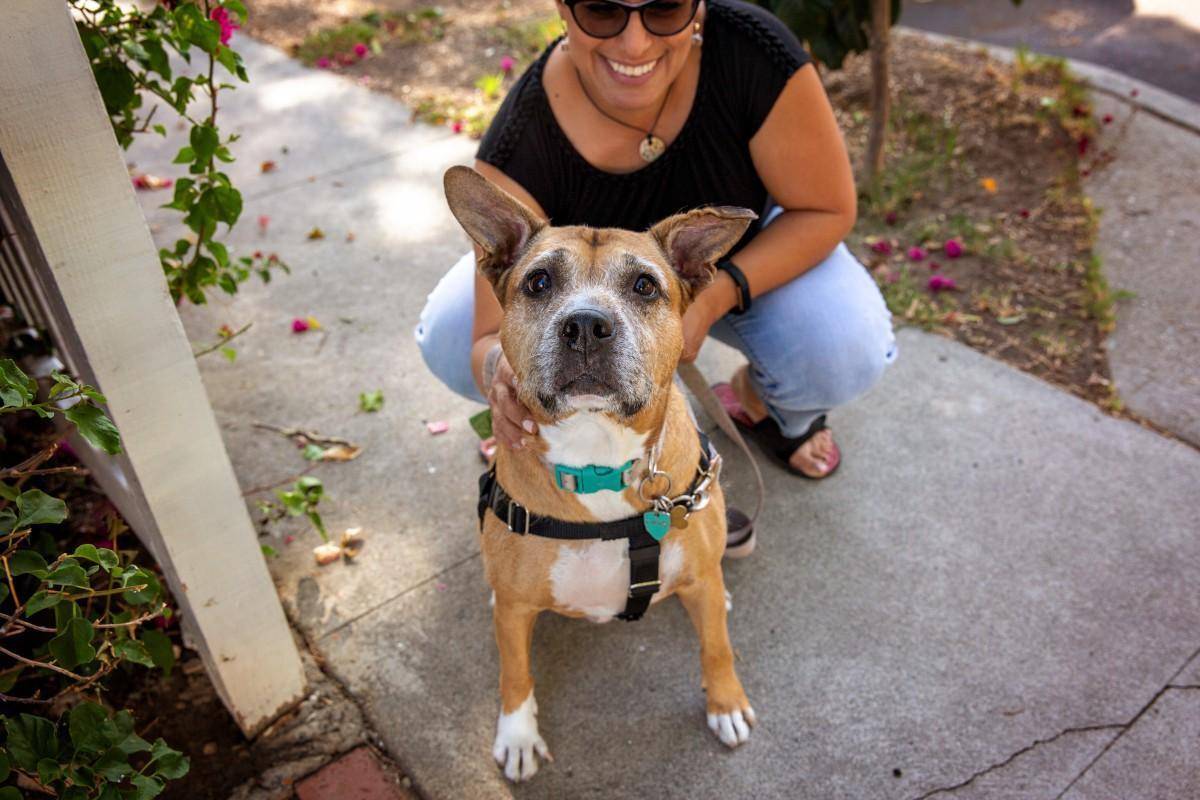Press Release
It’s November, the month of Thanksgiving and all things pumpkin spice. What you may not know is that November is also Adopt a Senior Pet Month, shining a spotlight on the amazing dogs and cats “of a certain age” available at shelters and rescues across the country.
According to Julie Castle, CEO of Best Friends Animal Society, there are many reasons to consider adding a senior pet to your life.
“Whether you’re looking for an active senior to go on walks with or a couch potato to help keep you company, there are plenty of older dogs and cats who would love to be your new best friend,” Castle said. “Most senior pets were once in a home, so they have great manners after acclimating to a new routine. They tend to fit right into their surroundings like they’ve been with you forever.”
As Castle noted, seniors in the pet world may also be younger than you think.
“Some shelters categorize seniors starting as early as age five, so they still have many years of love to give,” she said. “Unfortunately, senior pets can be among the most at-risk in shelters, even though they’re tried and true companions that just need a second chance. That’s why Best Friends is encouraging everyone to consider adopting a senior pet now.”
Here are some more fantastic reasons to adopt a senior pet:
-
Puppies and kittens are cute, but they also need to be trained, socialized and can be a bit unpredictable when being handled (especially by children). That’s a time and energy investment some families may not be comfortable with. Ask an adoption counselor about older pets with a positive history of living with youngsters and being housebroken.
-
Instead of having to go through that annoying chewing and destruction phase, most older pets just want to hang out with their people and their toys or find a cozy spot in the sun to curl up for a nap.
-
The size, weight and personality of a senior pet are already developed, so you can choose them for who they already are, rather for what you hope they’ll be when they grow up.
-
If you like specific breeds, they are typically easier to find at shelters and rescues as seniors. There are also breed-specific rescues that often have fantastic older pets.
If you’re concerned about adopting an older dog or cat due to potential health issues, it’s important to discuss the pet’s history with shelter staff. Shelters do intake exams upon admission and review any historical notes the pet may arrive with.
“Once you have that history and any other veterinary assessments done during the pet’s shelter stay, staff will be able to advise what kind of specific medication, food, supplements or increased veterinary visits they may need,” Castle said.
Not ready to commit just yet? Ask if you can foster the dog or cat first. Most shelters and rescues have programs that provide all necessary supplies and medical care while the pet is in your foster care.
If you fall in love and decide you want to keep your new friend forever, that foster can easily transition to an adoption. “We used to jokingly refer to that scenario as ‘foster failing,’ but we’ve recently started to call it ‘foster winning.’ It’s always something to celebrate when a homeless pet of any age finds their people,” Castle said. “Adopting and fostering are two of the ways people can help us reach the goal of making America a no-kill country by 2025.”
About Best Friends Animal Society
Best Friends Animal Society is a leading animal welfare organization working to end the killing of dogs and cats in America’s shelters by 2025. Founded in 1984, Best Friends is a pioneer in the no-kill movement and has helped reduce the number of animals killed in shelters from an estimated 17 million per year to around 355,000. Best Friends runs lifesaving programs all across the country as well as the nation’s largest no-kill animal sanctuary. Working collaboratively with a network of more than 3,900 animal welfare and shelter partners, and community members nationwide, Best Friends is working to Save Them All®. For more information, visit bestfriends.org.

